The Original and Accessible Mido Multifort TV Big Date
Stylish and practical, it effortlessly combines vintage 1970s appeal with modern watchmaking.
Over the past couple of years, the luxury sports watch segment has exploded in popularity. Fueled by a demand for seemingly impossible-to-get watches like the Royal Oak and the Nautilus, people started to look elsewhere. Many brands and even some independent watchmakers presented their own spin on the concept, resulting in a wide range of new models, including the Mido Multifort TV Big Date. With our latest video, we’re going to take a closer look at this surprisingly accessible and originally shaped take on the ever-popular luxury sports watch.
The Multifort TV Big Date has a 39mm by 40mm TV-shaped stainless steel case, giving the watch its name. The broad bezel has a surprising pip and characteristic lips at the top and bottom. All of these elements give the watch a rather unique appeal, slightly outside of the classic codes of the genre with their angular barrel-shaped cases. The surfaces are alternatingly brushed and polished, as is common in this category. The crown has a pair of guards to protect it from unwanted shocks. A sapphire crystal covers the front, while the back has a mineral crystal.
The dial follows the archetypical style of a luxury sports watch. It comes in gradient blue, grey or green and gets darker towards the edge. The horizontal grooves alternate slightly in depth and width, adding character to the dial – which is particularly true when you move the watch, producing different light reflections. Pretty cool. The hour indices are recessed into the main dial and finished with Super-LumiNova. The hands are quite simple but very legible in virtually any situation.
What stands out is the Big Date display at the top. The window reveals two discs, one for the tens and one for the single digits. It makes reading the date a breeze and sets the watch apart from many of its direct competitors, not only because of the complication itself (which is a Mido signature) but also because of its position on the top of the dial. Indeed, some will find this display slightly odd, but it has charm and exclusivity.
This Mido Multifort TV Big Date is driven, without much surprise, by the Mido calibre 80. This is based on the ETA C07.651 automatic movement, also known as Swatch Group’s widely-spread Powermatic 80 movement. This modern calibre, itself an evolution of the tried-and-tested ETA 2824 architecture, has an anti-magnetic Nivachron hairspring, is shock-resistant and has a comfortable running time of 80 hours.
All dial variants – the Multifort TV Big Date is available in blue like the present version, but also in gradient grey or green – are presented on a 22mm stainless steel bracelet, which doesn’t really follow the classic codes of the integrated design. It’ll be pretty easy to change it for a classic leather or textile strap. Mido also offers orange or blue rubber straps with the grey or blue dials. The bracelet has a brushed finish, polished centre links, and a folding clasp. Integrated quick-release push pins make for easy work when swapping out the bracelet for the strap.
Original, well-equipped and pleasant to wear, the Mido Multifort TV Big Date retails for a very sensible EUR 1,170 on the rubber strap or EUR 1,200 on the steel bracelet and is now available. For more details, please visit www.midowatches.com.



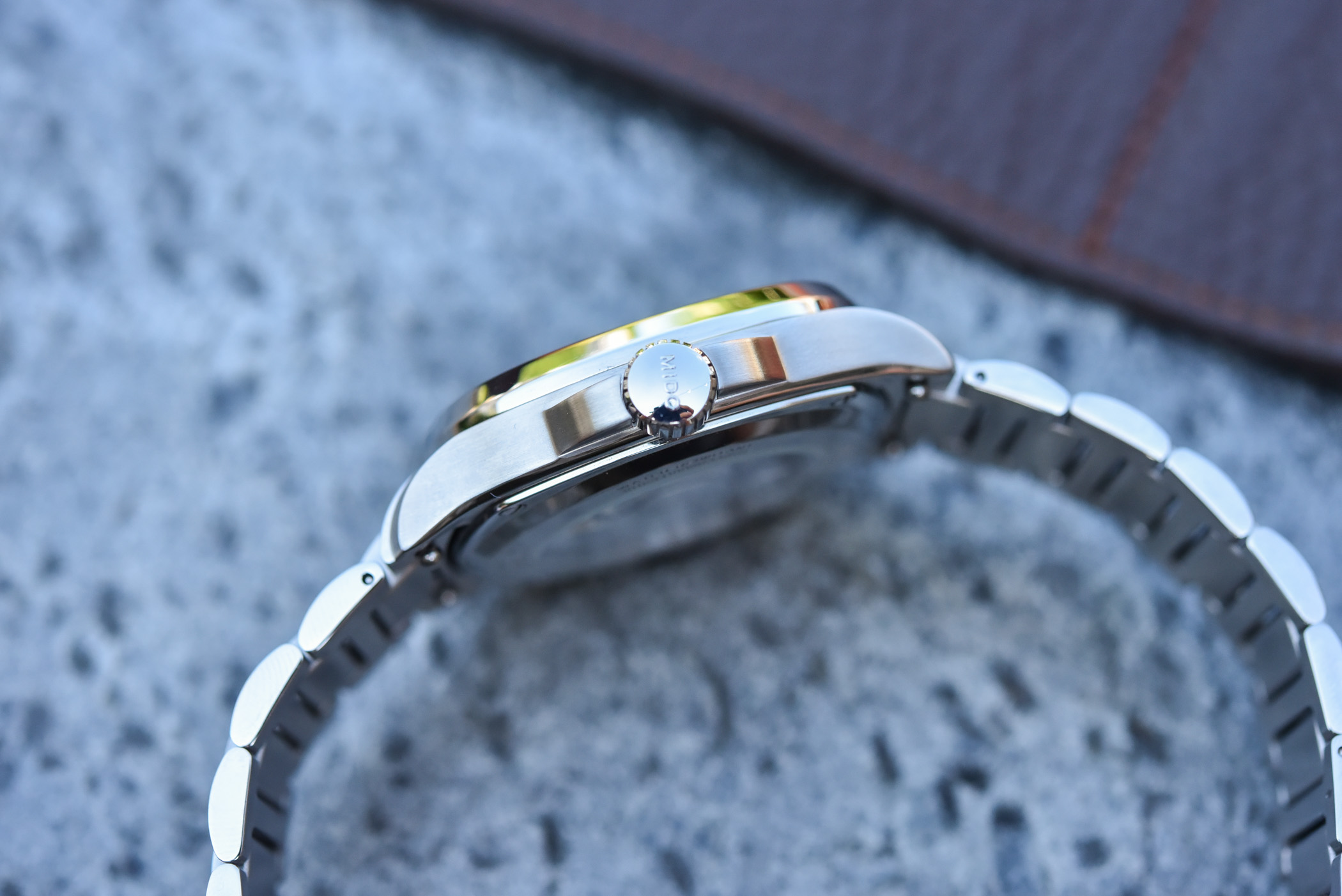
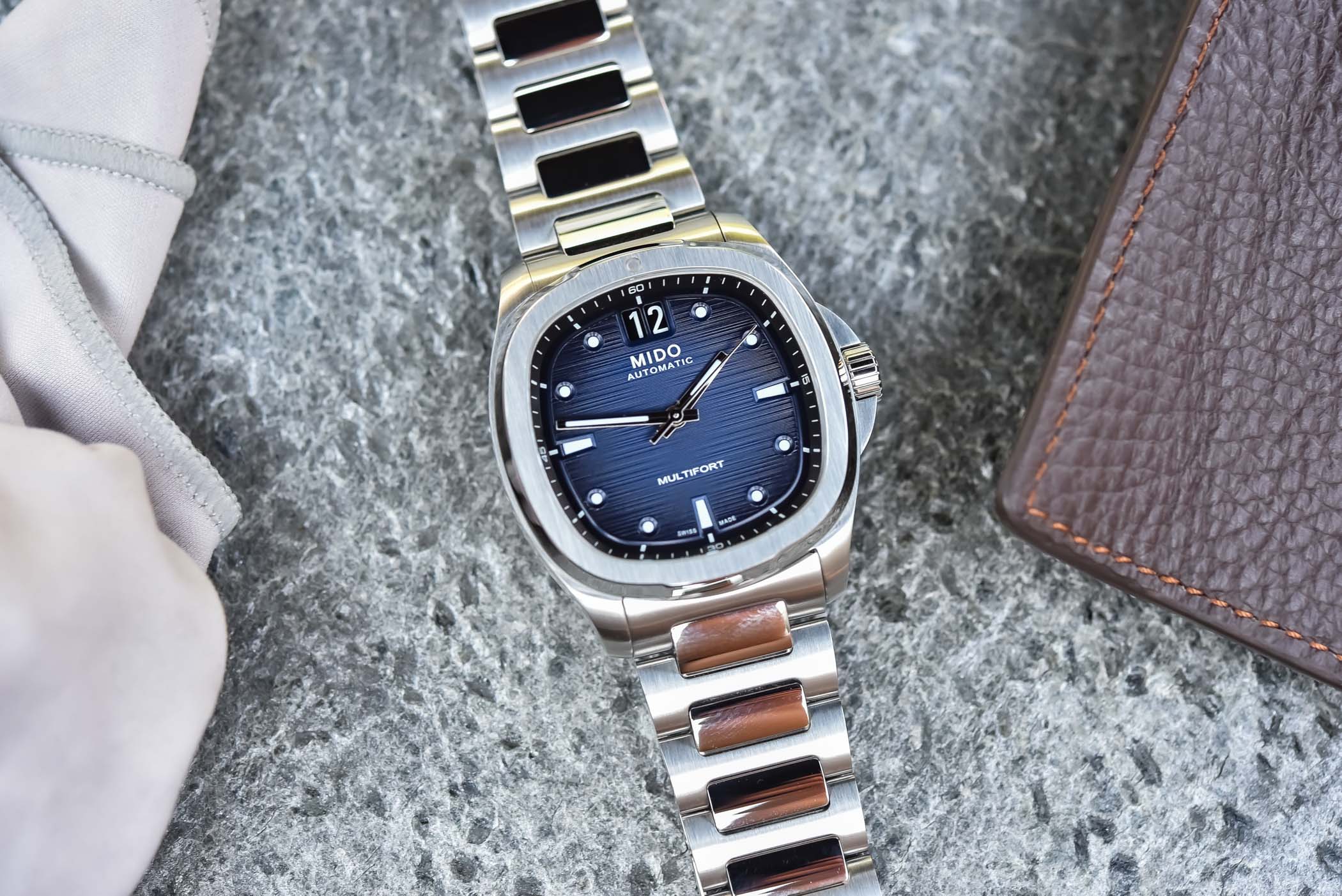


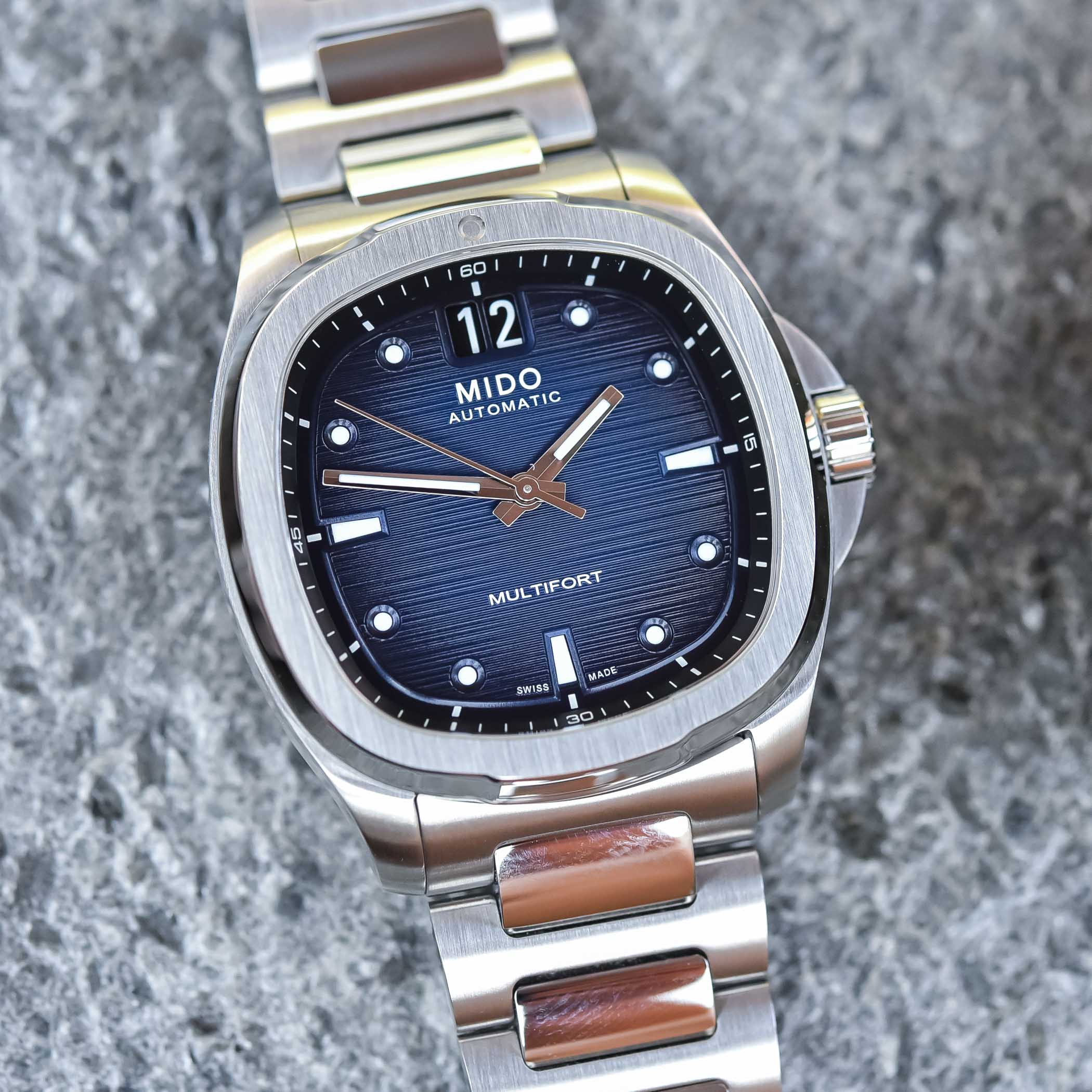
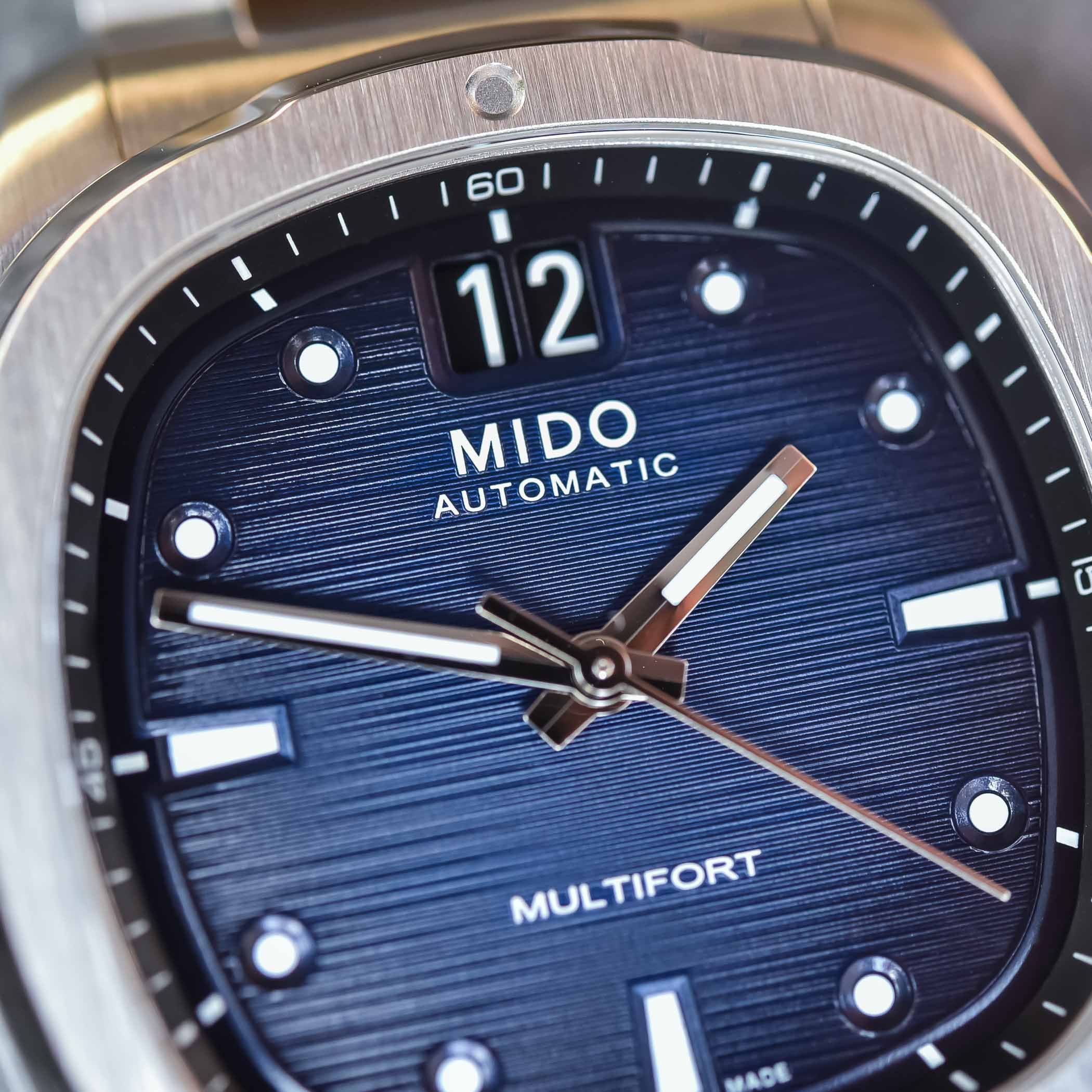

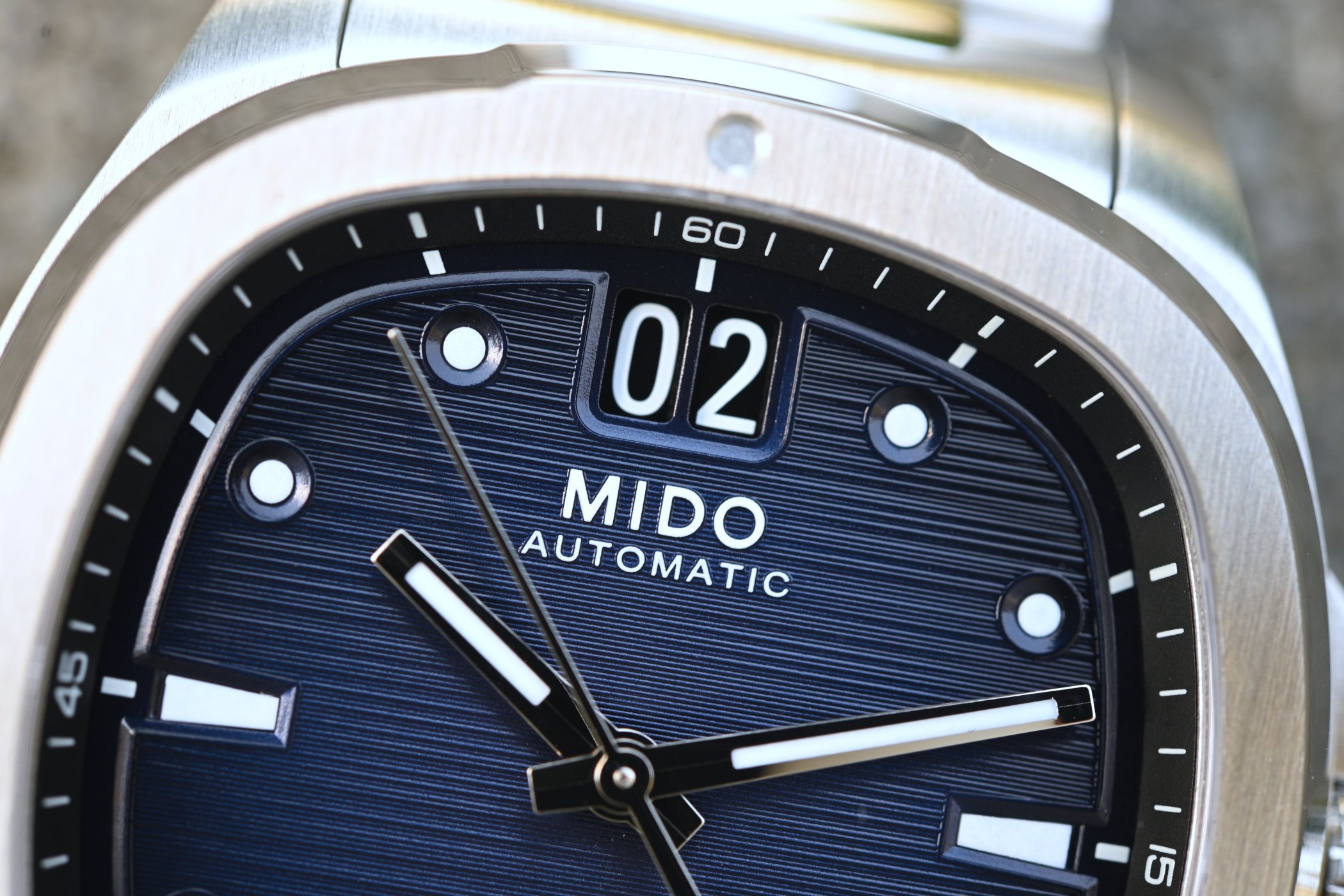



7 responses
When titanium?
I recently purchased the blue dial rubber strap version, it a very good watch. And quite accurate, at the end of a seven day period it runs +5 seconds. An excellent watch for the price.
Much better deal than BR05 with similar profile, less cost and as good under hood.
Another nautilus clone but nice and affordable.
The Multifort came out in 1973, I believe the nautilus first year was 1976. It hard to be the clone of something that came after you.
Shouldn’t TVs be frameless flat screens in this day and age?
aegre fero – aegre fero mia cupa